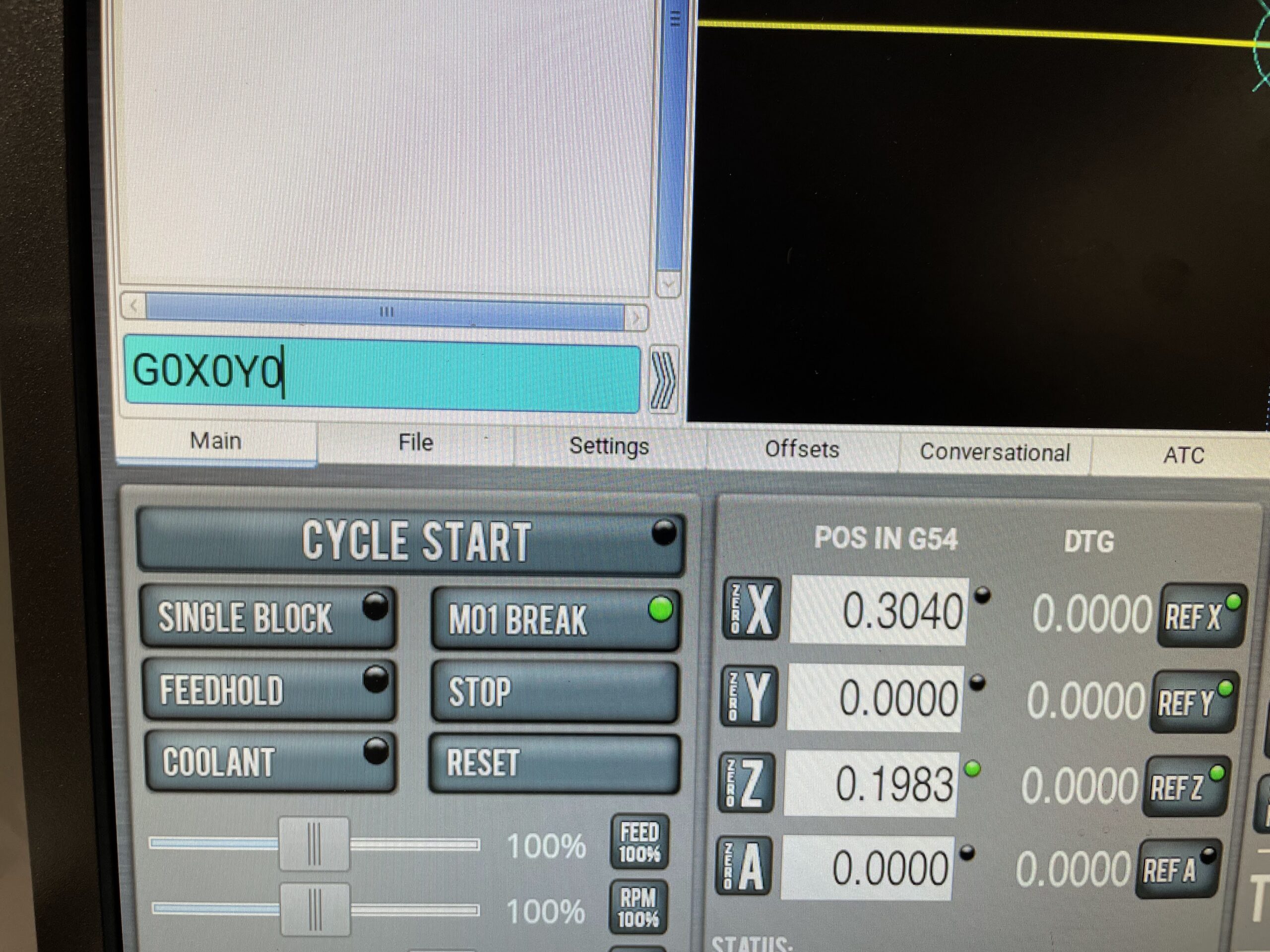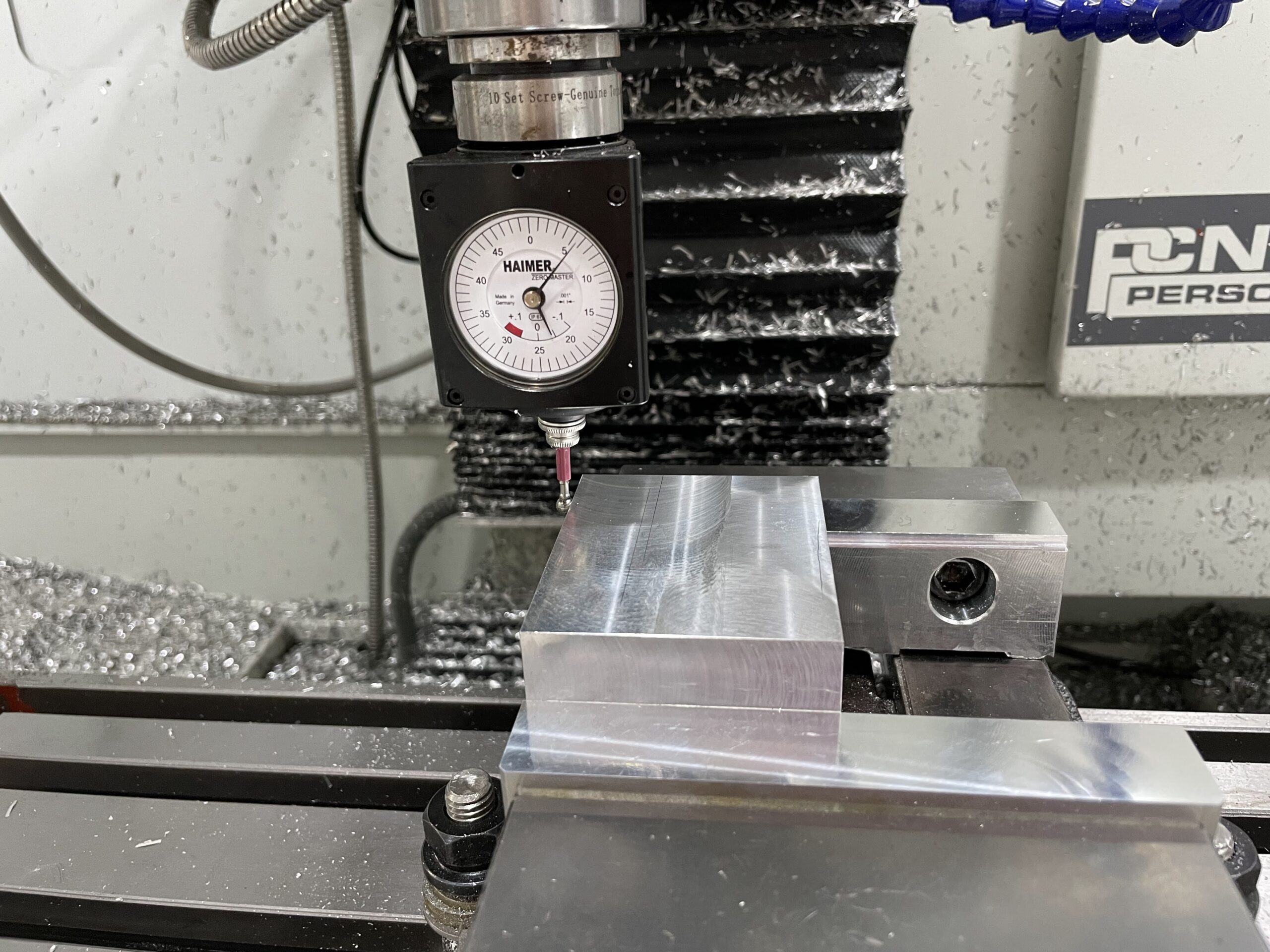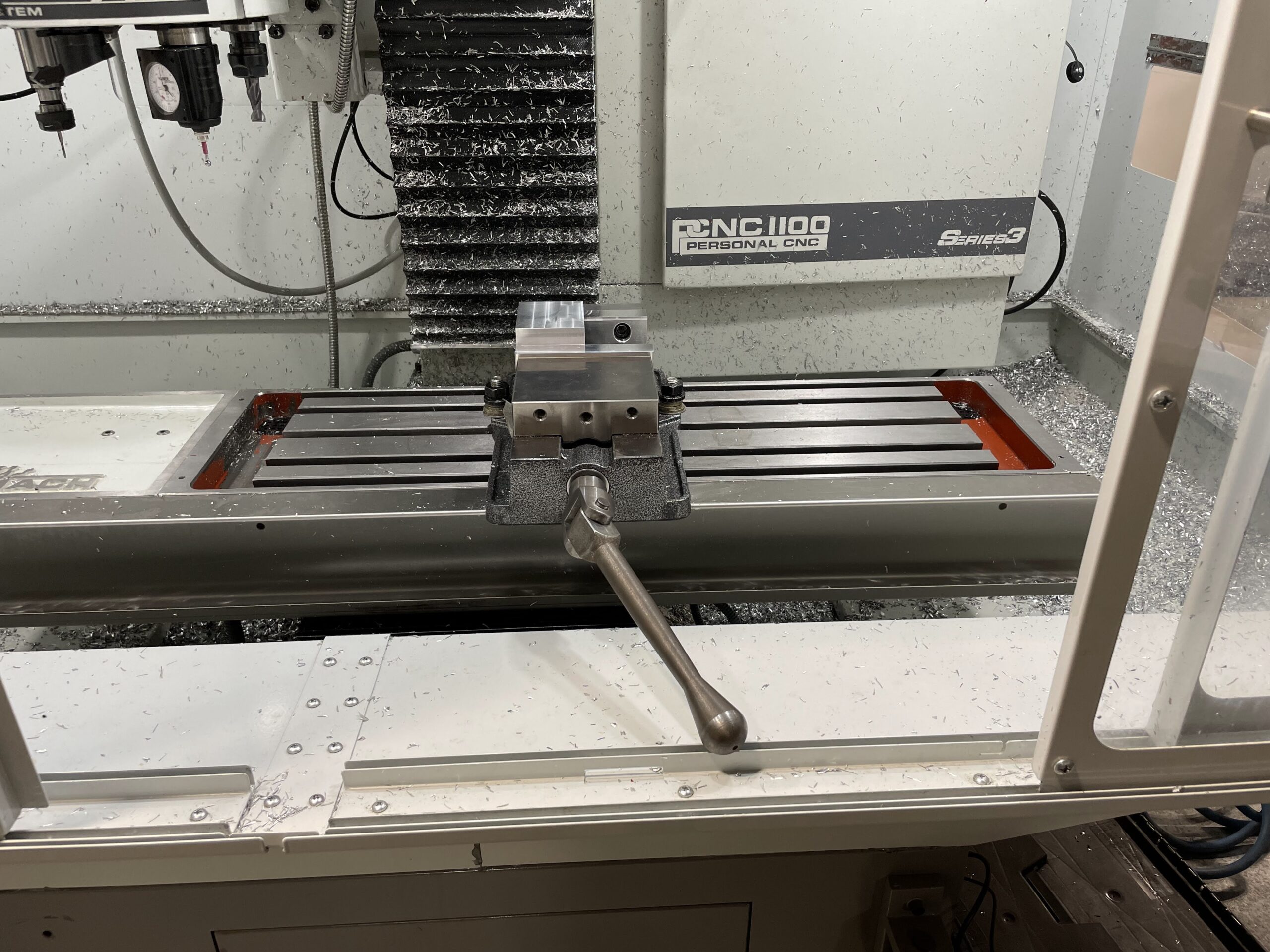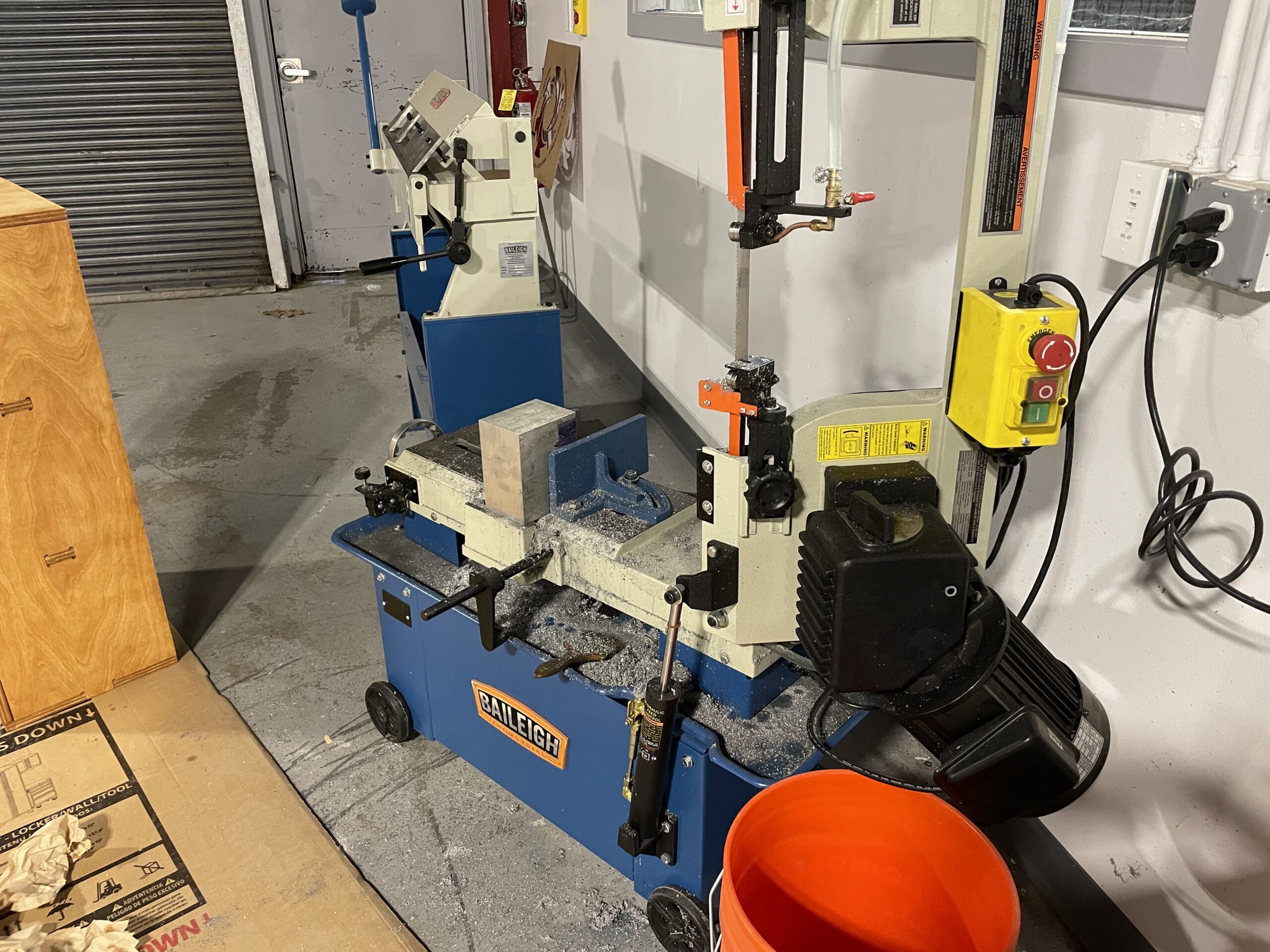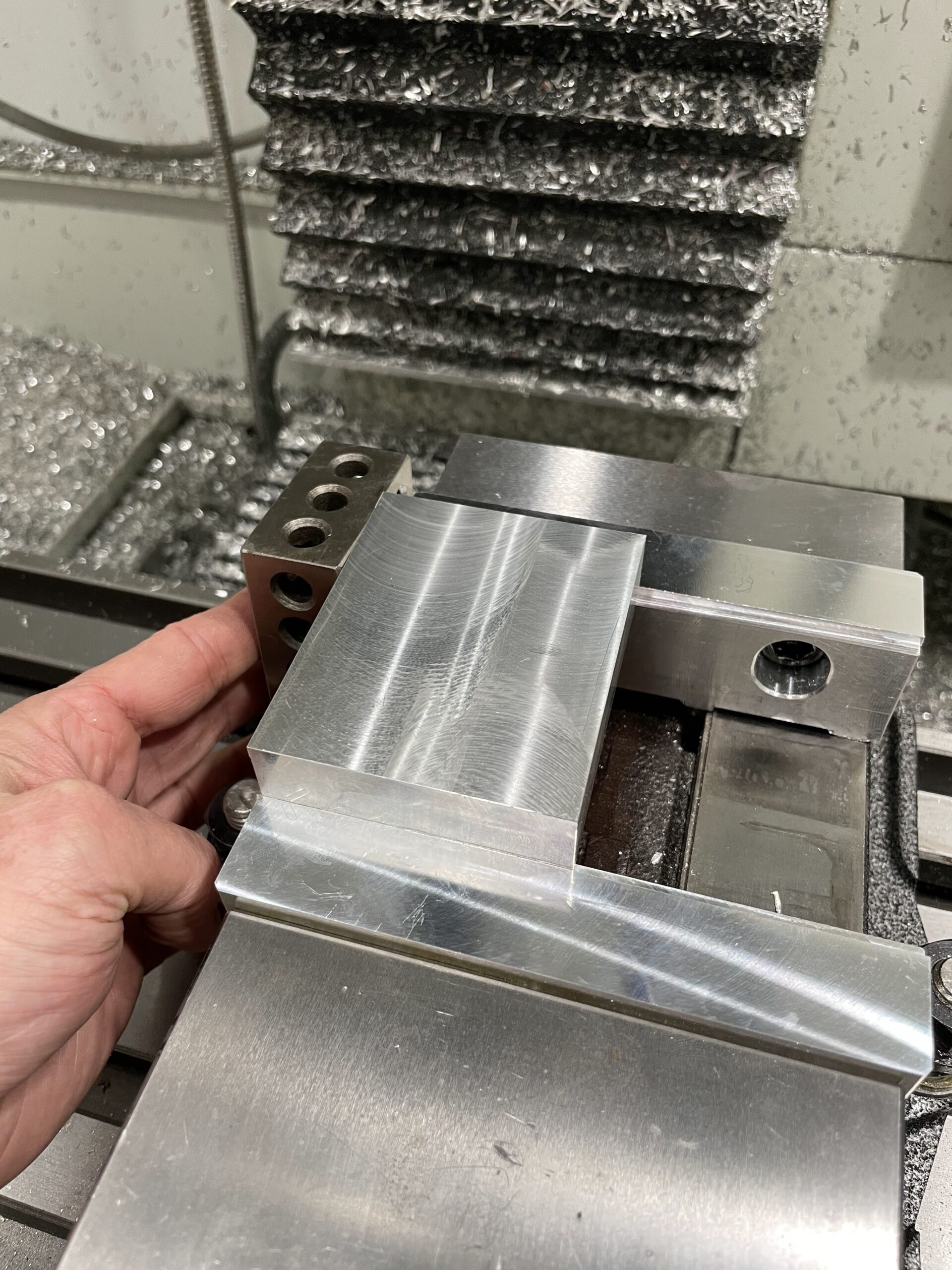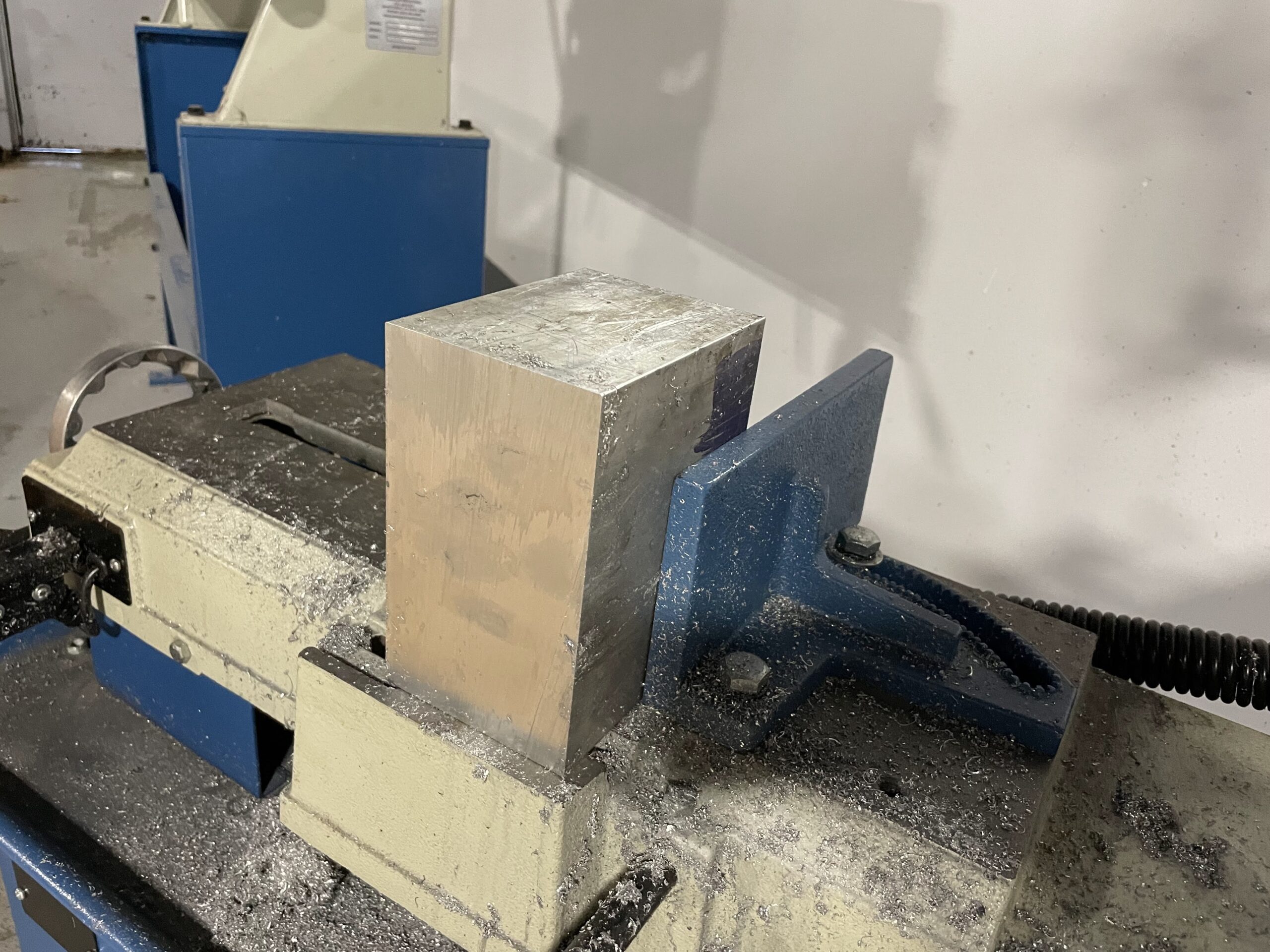I watched Monday’s School Committee meeting because there were rumblings around the school about the financial stability of the district. After watching, it appears these fears are substantiated and the district is going to need to let people go yet again this year. It will interesting to see how the administration begins to reduce staff for yet another year in a row when each year it seems as if we are cutting all the ‘fat’ from the budget. I’d suggest we are pretty lean at the moment. I also found the comments that when the city’s budget was lean during the pandemic, the only cuts in personnel across the city were teachers.
Cardboard Canoes
It has been 4 years since we last competed in the Cardboard Canoe races, and while we had a very sturdy boat, it was almost too sturdy. It tipped over too easy because if floated so well and was not easy for our students to control. Those freshmen who built the canoe are now seniors and are working on a new boat for this years races. Our shop has 2 entrants a senior team and a junior team. It’s exciting to see their work, and to see how far our shop has come in providing our students with the tools to make these incredible objects. A few photos below of the construction process. The event is June 12th, and I will post more info as we approach the date.
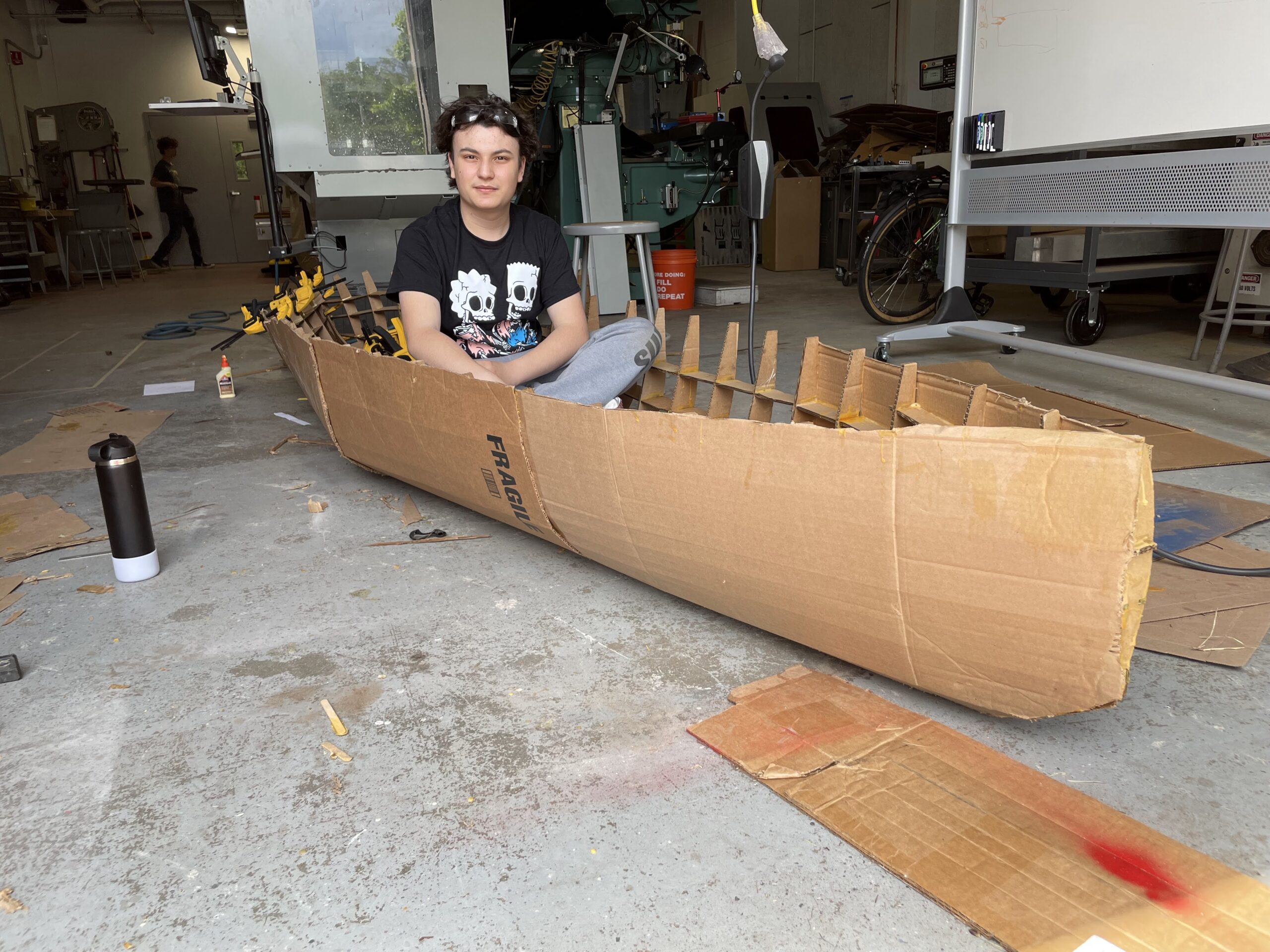
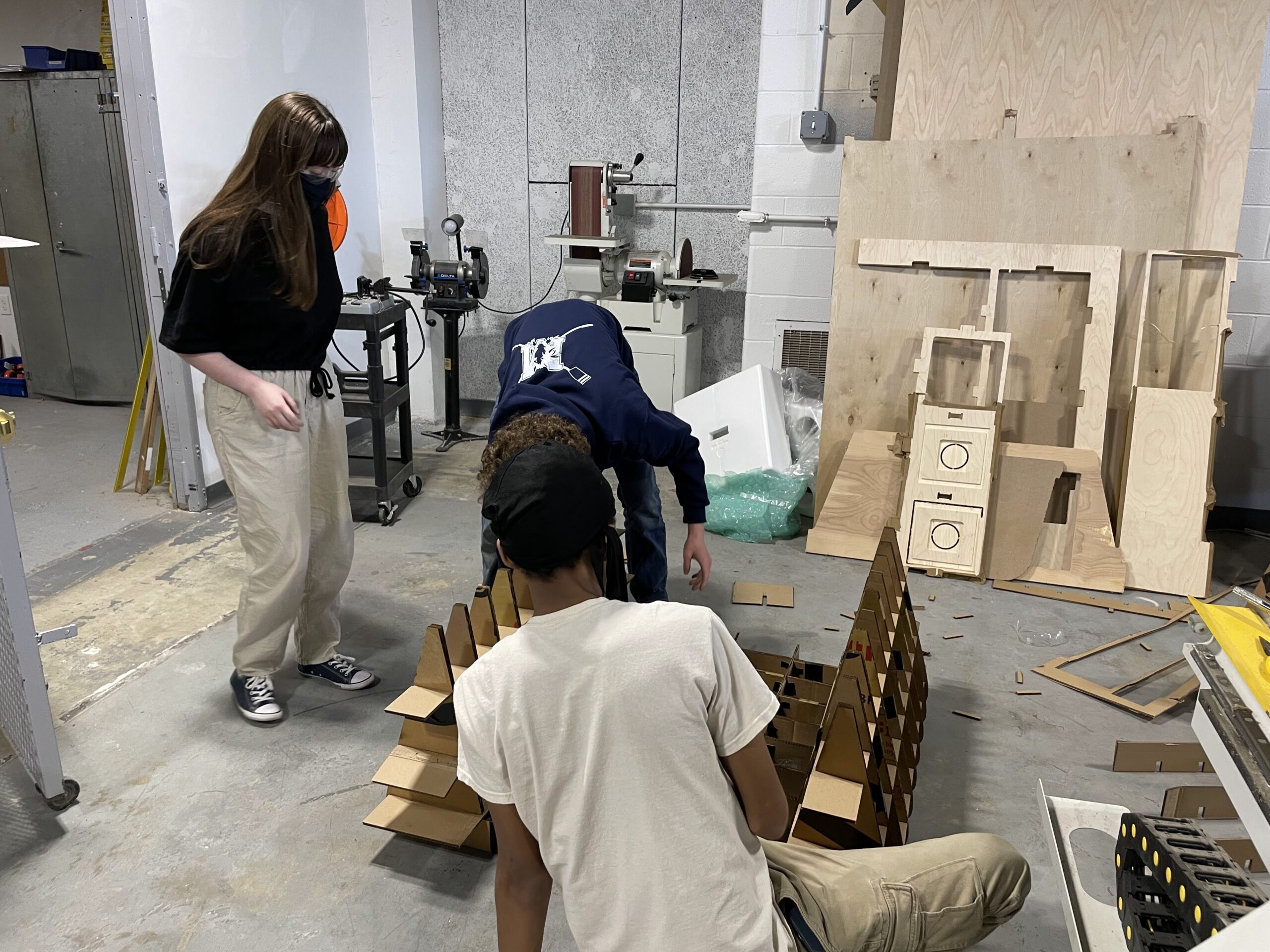
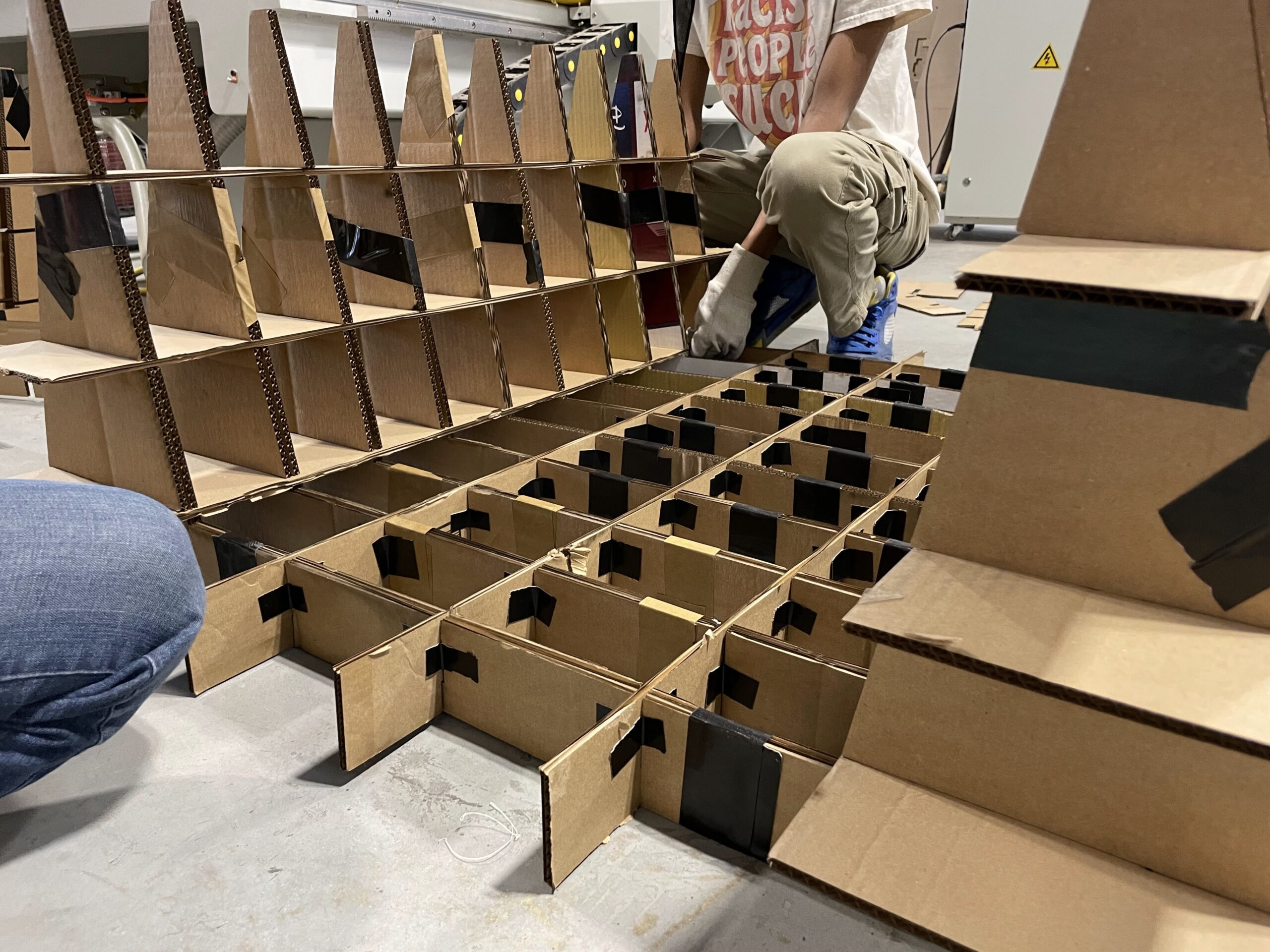
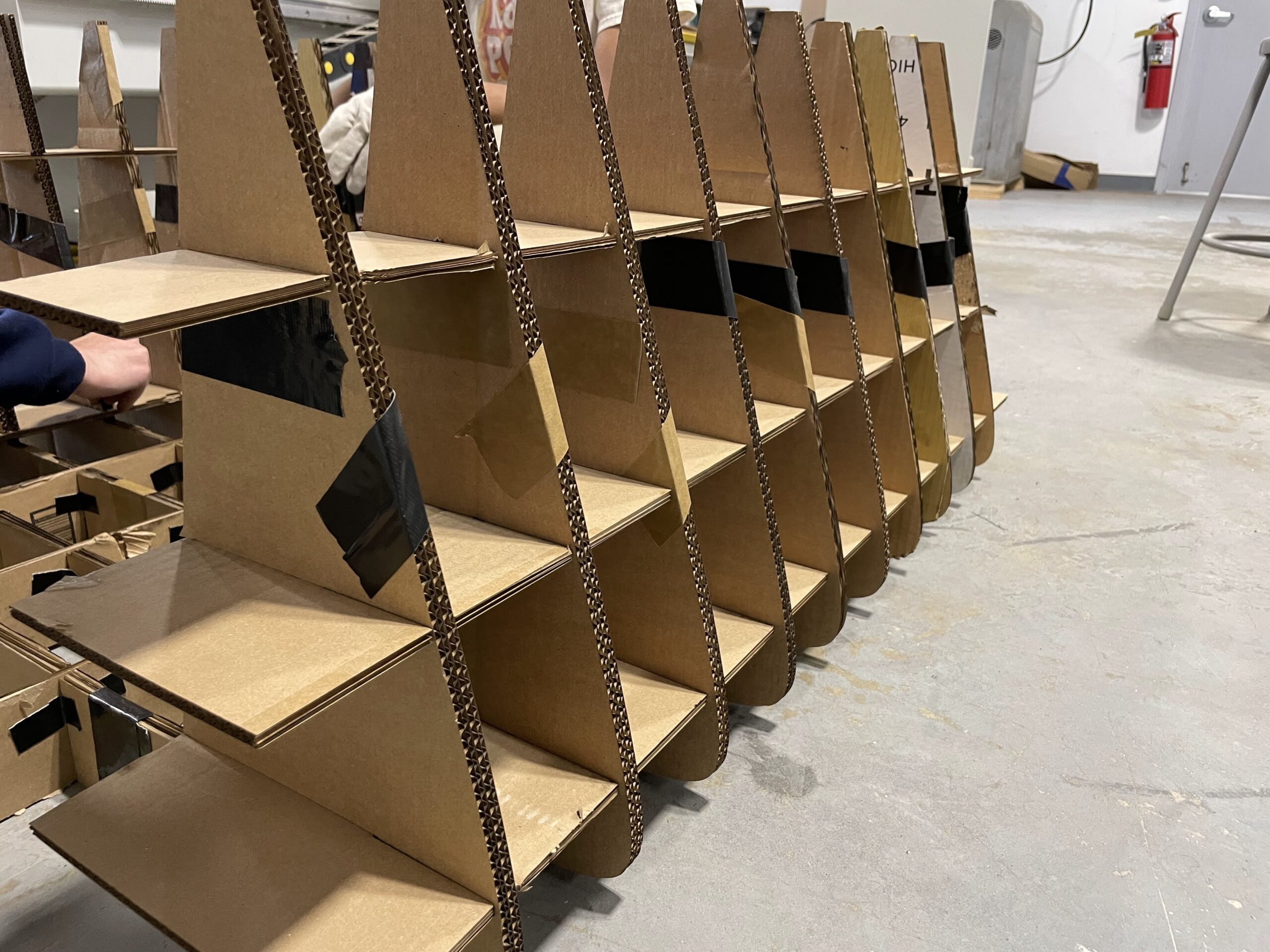
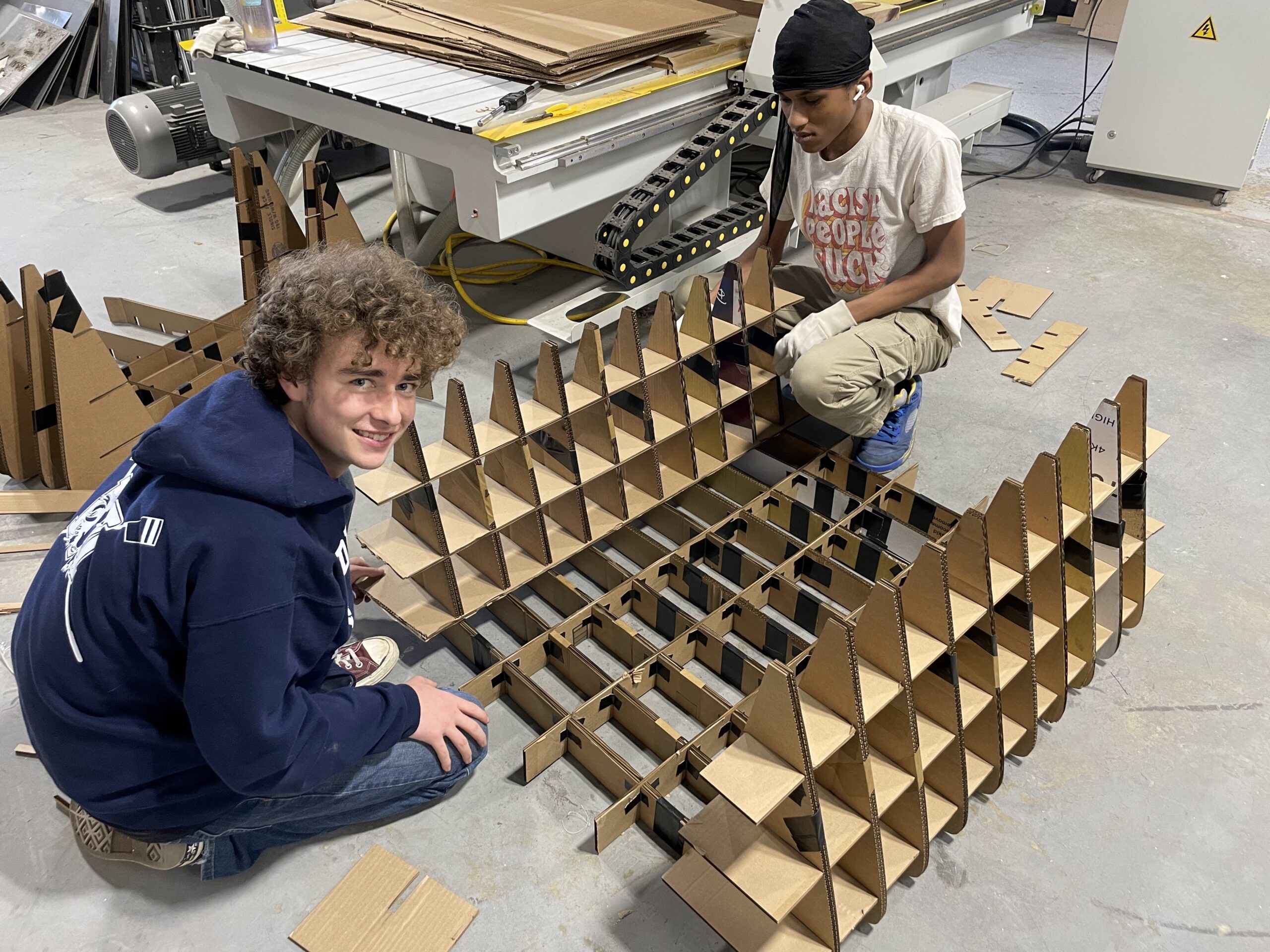
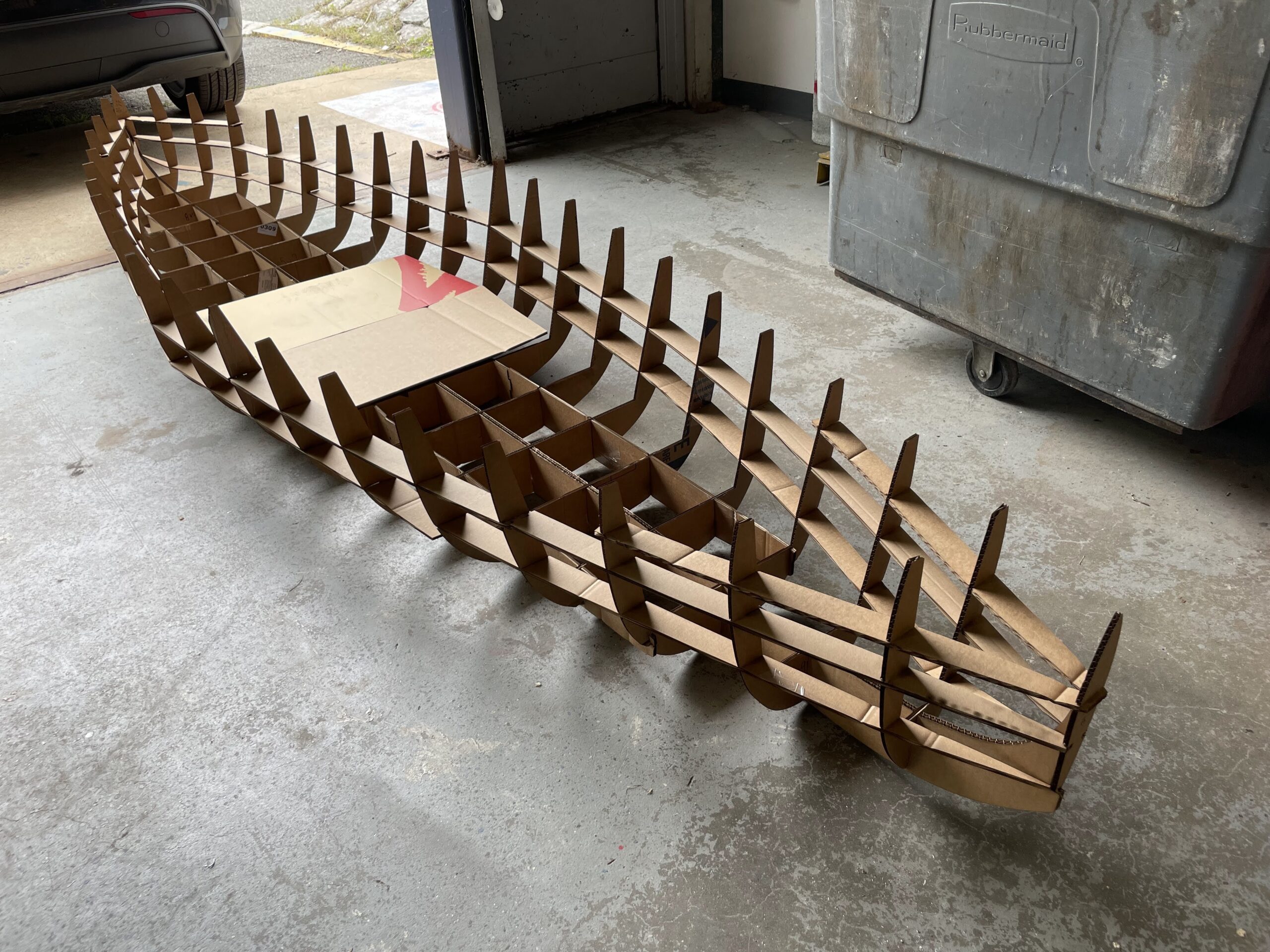
Arduino Holder Project
Today I’ll talk a little bit about setting up a part for use on our Tormach PCNC 1100 mill. As I said in a previous post, I’m working on a new project for students, creating a custom arduino holder out of aluminum. I’ve been documenting the process of preparing the stock for the mill.
The project as designed in CAD calls for a 0.8 x 2.6 x 3.2 in block of aluminum stock. I’ve cut a .9″ thick piece of stock from a 6 x 4 inch block and then roughed it to down on the bandsaw to get it close to the dimensions I want. Next, I took it over to our Trax mill and faced off all sides until it was milled to the dimensions mentioned above. I probably do not need to be this precise, but its a good exercise, and will give the students a good beginning in using our manual mills.
Once the block was ready I took it over to our Tormach machine and proceeded to zero out the X, Y, and Z coordinates. This is extremely easy using the Heimer – a measuring tool that provides the zero, or edge, coordinate without the user needing to to any math as might be done with a standard edge finder. See video below.
This project requires a part flip, and for the first attempt, I tried using the same X and Y coordinates – which did not work out. Mostly because the Y coordinates did not match on the flip. Another issue I had was tapping the holes. I did not properly set the RPM and feedrate correctly for the 4-40 tap, and it broke immediately. A silly mistake, but one that will be easily fixed next time I run the job.
There are some photos and videos below of the process, although I forgot to take a photo of the finished product. Will update on the project next week.

